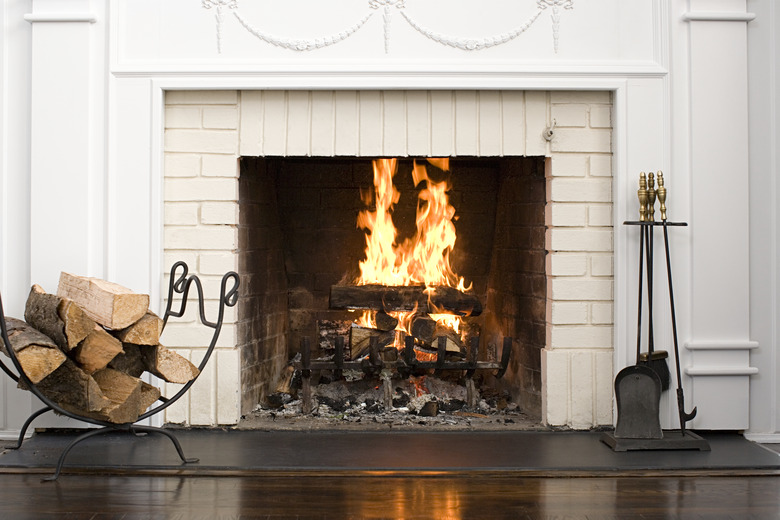Using A Fireplace Damper
A crackling fire in your fireplace adds a cozy feel to your room, but it can quickly turn dangerous if you don't know how to operate it properly. The damper is one part of the fireplace you need to learn to use quickly if you don't want a house full of smoke. Proper damper use also helps you get a good fire going in your fireplace.
What Is the Damper?
What Is the Damper?
A fireplace damper is a metal plate or cap that sits inside or on top of your flue. It blocks off the airflow when it's closed and lets air through when it's open. Air can flow both ways, so outside air can come into your home and the heated air from your home can escape through an open damper. When a fire is going, the hot air from the fire rises up through the flue, pulling room air behind it. This is the draft effect that keeps smoke out of your living space and adds oxygen to the fire.
Fireplace dampers come in two main types: Chimney top and throat. Chimney top dampers sit at the top of the chimney with a chain and lever to open and close it. They usually feature mesh guards to keep critters out of your flue and a leak-proof gasket to keep out moisture. Throat dampers sit lower in the flue, just above the firebox. This type is usually controlled by either a lever or a knob. Some types of dampers have only two options: Fully open or fully closed. Others let you adjust the damper to control how much it opens.
Why Open and Close It?
Why Open and Close It?
If an open damper lets air into the house, why would you ever want it open? It's true that you should keep the damper closed any time you're not using your fireplace. If you leave it open all the time, you'll lose a lot of air from your home that's already been heated or cooled, depending on the season. That increases your utility bills and wastes energy.
But when you have a fire going in your fireplace, you want the damper open to let in extra oxygen, which helps the fire burn better. The open damper also lets the smoke go up and out the chimney. If you leave the damper closed while you're burning wood in the fireplace, your home can quickly fill up with smoke.
How to Operate the Damper
How to Operate the Damper
Damper operation depends on the type of damper you have. If you have a chimney top damper, you'll likely see a handle with a chain or cable attached to it that runs up through the flue to the damper. The damper is a metal cap that may pop up with springs or swing open once you release the tension on the chain or cable. Chimney top dampers can become stuck closed with ice or snow; in snowy or wet, freezing conditions, make sure the damper opens all the way before starting a fire.
If you have a throat damper, you'll likely have either a lever or a knob. The lever can move in different directions depending on the type. You might have to push it in and out, up and down or side to side. Move the lever to open or close the damper. If your fireplace has a knob, you'll twist the knob to open the damper. This type lets you adjust how far open the damper is.
Damper controls are usually located near the top of the firebox. Test out the damper when the fireplace is not in use to get a feel for how it works. You can look up into the chimney and see it open and close. This is a good way to get a feel for how the damper and its controls work.
Maintaining the Damper
Maintaining the Damper
Over time, your damper can become damaged or jammed with soot buildup. Regular cleaning by a professional chimney sweep can help get rid of the soot that can interfere with how the damper operates. Throat dampers may eventually become warped because they're so close to an intense heat source. Dampers at the top of the chimney are susceptible to weather damage. If you notice warping or feel a breeze coming through the damper even when it's closed, you may need to replace it.
